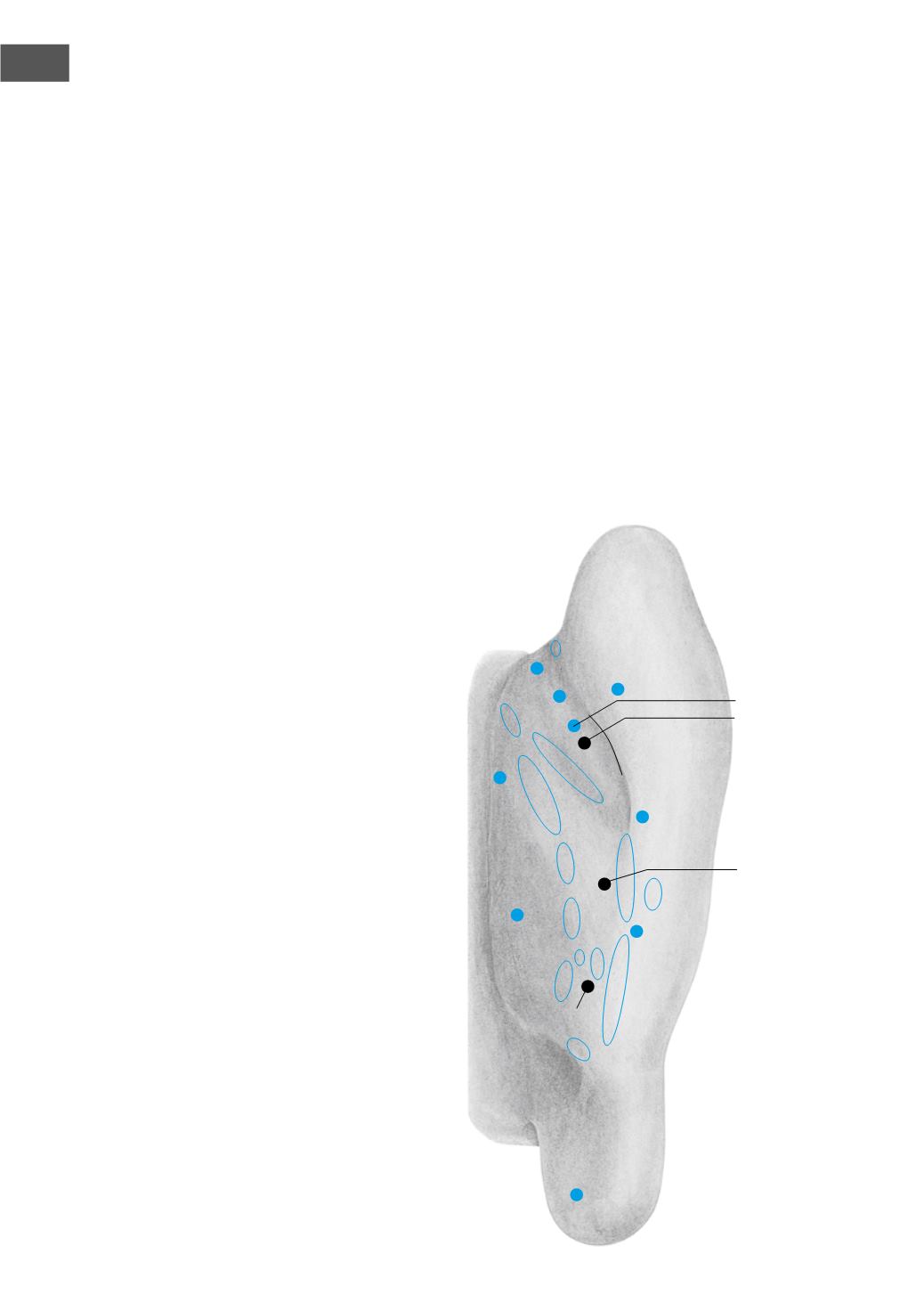
100
6 Point Locations
6.11
Points on the Posterior Ear
The motor aspects of the organs are projected primarily on the posterior ear while the sen-
sory aspects are found on the anterior ear. The posterior ear should therefore be included
when treating the spine and the musculoskeletal system in order to increase the treatment
effect. However, since the points on the posterior ear are arranged less clearly than on the an-
terior ear precise point location can be more difficult. Treatment of the posterior ear is there-
fore recommended mainly in addition to the anterior ear, especially for beginners. Stimulat-
ing the sensory aspects of the organs on the anterior ear will also have a therapeutic effect on
the motor aspects (e.g. by relaxing the musculature of the spine
›
6.1.2,
›
6.1.3).
6.11.1 Spine (› Fig. 6.11-1)
When the ear is folded over the anatomy of its posterior aspect can be somewhat confusing.
The following descriptions of the point locations should therefore be considered as a rough
guide only. The precise locations should always be determined by RAC-palpation (
›
3.1.4).
•
Cervical Spine:
a zone on the inferior part of the antihelix groove; indication: pain
therapy
•
Thoracic Spine:
a zone in the me-
dial part of the antihelix groove;
indication: pain therapy
•
Lumbar Spine:
a zone in the
groove of the inferior crus of the
antihelix; indication: pain therapy
•
Cervical Spine (107):
a few milli-
metres medial to the midpoint of
the inferior third of the antihelix
groove; indication: pain therapy
•
Thoracic Spine (108):
a few milli-
metres medial to the midpoint of
the antihelix groove; indication:
pain therapy
•
Lumbar Spine (106):
a few milli-
metres medial to the midpoint of
the superior third of the antihelix
groove; indication: pain therapy
The motor aspects of the spinal cord
are represented on the posterior aspect
of the helix brim (in contrast to its sen-
sory aspects on the anterior ear
›
9.3).
Following RAC-palpation, pain ther-
apy should only be carried out in cases
of known irreversible damage to the
spinal cord. If the spinal cord is intact,
as in a prolapsed disc with motor defi-
7DORFUXUDO -RLQW
.QHH
+LS
/XPEDU 6SLQH
%ODGGHU
(OERZ
7KRUDFLF 6SLQH
6KRXOGHU
5HFWXP
%ORRG 3UHVVXUH
/RZHULQJ *URRYH
/XPEDU 6SLQH
&RORQ
6PDOO ,QWHVWLQH
6WRPDFK
/XQJV
7KRUDFLF 6SLQH
&HUYLFDO 6SLQH
3RLQW =HUR
UHWUR
3*(
+HDUW ,,
&HUYLFDO 6SLQH
:ULVW
6SOHHQ
/LYHU
+HDUW ,
.LGQH\
Fig. 6.11-1


